Most Popular
Subway Stories
[Subway Stories] Gwanghwamun revamped: old sounds, but new look
With tributes to tragedies and continued political protests in the newly renovated plaza, Gwanghwamun brings mix of feelings to Seoulites
By Yoon Min-sikPublished : Nov. 6, 2022 - 15:09
On Saturday, an estimated 20,000 people gathered on the streets of Jung-gu, Seoul near City Hall Station and Gwanghwamun Station in memory of the Itaewon tragedy that claimed 156 lives. The participants protested the lack of safety measures and promptness in response from authorities the day of the tragedy.
The tribute, however, sparked a mixed reaction as some -- particularly the factions supporting President Yoon Seuk-yeol -- raised suspicion that the protest was politically charged to bring down the current conservative administration.

Saturday’s rally was a reminder that the areas around Gwanghwamun Station on Subway Line No. 5 -- adjacent to a number of significant sites such as the Cheonggyecheon Stream and Joseon-era palaces -- were still the epicenter of disputes, despite the protest ban by the Seoul government when it reopened the Gwanghawmun Plaza in August after a 21-month renovation. The renovation included more plant life, fountains and monuments to commemorate the two great Korean heroes, Sejong the Great and Admiral Yi Sun-shin, overlooking Gwanghwamun.
The new and improved Gwanghwamun Plaza draws more and more families and tourists, wanting to experience a perfect blend of old meets new.
But, specifically on weekends, it is often taken over by thousands of protestors. Noise, traffic jams, clashes with authorities and complaints from local businesses have also become part of this new scene.
Surely, this could not have been the intention of the metropolitan government when it restricted the plaza to only “healthy leisure and cultural activities.”
Protest ban at Gwanghwamun Plaza
This restriction has existed since the plaza’s initial opening in 2009, meaning it technically had never been open to political rallies. But protestors have bypassed it by submitting the applications under “cultural activities,” or applying for rallies in the adjacent area and eventually migrating to the plaza.
Gwanghwamun Plaza has since become a symbol of civic activities through various demonstrations, particularly the 2016 protests against corruption allegations of then-President Park Geun-hye that eventually led to her impeachment.

But the politically-charged rallies that persisted have led to complaints, leading the Seoul government to a stricter screening process regarding which events are permitted.
A team of consultants consisting of experts in social events, law, and police work now look into the application for the use of plaza to see if the proposed event is a protest in disguise, leading to complaints from civic groups that Seoul is restricting the citizens’ freedom of expression.
Eighteen groups including the People’s Solidarity for Participatory Democracy held an unpermitted demonstration at the plaza last month, after the city government declined their application. This led to a municipal order issued on the groups to compensate financially for the illegal occupying of the area, for the first time since reopening of the Gwanghwamun Plaza.
“Gwanghwamun Plaza does not fall under the banned areas defined by the Assembly and Demonstration Act, so Seoul city cannot restrict demonstrations through its ordinance and rules... Any restriction of the basic constitutional right of assembly should only be possible through law, yet (Seoul government’s) attempt to ban protests through ordinance is unconstitutional,” the People’s Solidarity for Participatory Democracy said in its statement.
The areas in which protests are forbidden by the Act include areas within 100 meters of the National Assembly, courthouses, residential areas of the president, the National Assembly speaker, and the heads of the Supreme Court and the Constitutional Court.
The civic groups said it will challenge the city’s order for compensation through legal proceedings, which could lead to another legal battle over the citizens’ right to protest.
What’s ironic is that the ongoing feud may be a moot point, as demonstrated by the Oct. 22 protests that submitted applications to the adjacent areas -- including in front of the Donghwa Duty Free Shop that is just a stone’s throw away from the plaza -- and ultimately spilled over to the Gwanghwamun area. Over 300 police officers were dispatched to the scene to control traffic and maintain order, but confrontations between protestors and officers could be seen for hours.
The conflict reached its peak when the marches of liberal and conservative rallies collided around 4:30 p.m. near the Taepyeong-ro Rotary near City Hall Station, leading to physical altercation, on a small scale.
Gwanghwamun Plaza hosted a taekwondo performance held by the Seoul government on Saturday, along with a Hallyu event in front of Sejong Center for the Performing Arts across the street. But visitors were hardly free from the sounds of protestors carried through loudspeakers and the overall chaos that engulfed the area.

How do visitors feel?
Protests aside, the revamped Gwanghwamun Plaza has been garnering generally positive reactions from visitors. Seoul Tourism Organization last month revealed a survey that 77.3 percent of respondents, 960 Koreans and 111 foreigners, said the plaza has improved because of the renovation.

Positive reactions were attributed to 68 percent said improvement of parks, 53.6 percent said more areas to walk and 40.6 percent said additional facilities for rest and convenience. The new plaza embraces pedestrians, being more green and having ample seating areas.
A total of 87.5 percent said they were satisfied with Gwanghwamun Plaza, and 87.2 percent said they would revisit.
In contrast to the boisterous protesters found on weekends, these days many families, couples and tourists enjoy their leisurely time in the area.
A young man, surname Kim, said he did not expect so much commotion when he and his girlfriend decided to check out the refurbished plaza on Saturday, Oct 22. “We like the sculpture and the look (of the plaza), but all the nearby (protesting) is just unbearable. I don’t think people would be able to enjoy (the revamped) Gwanghwamun Plaza if this continues on,” he said.
Permitting protests in a public area, deciding to what degree(s) rallies should be allowed, and respecting constitutional freedoms of expression are all considerations converging at Gwanghwamun.
With no clear solution and neither politically-charged side of protesters ready to let up, noises of the old and new are expected to continue filling Gwanghwamun Plaza -- at least on Saturdays and Sundays.










![[Weekender] Korea's traditional sauce culture gains global recognition](http://res.heraldm.com/phpwas/restmb_idxmake.php?idx=644&simg=/content/image/2024/11/21/20241121050153_0.jpg&u=20241123224317)
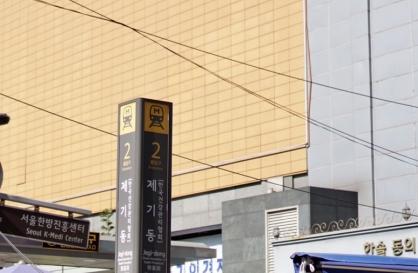
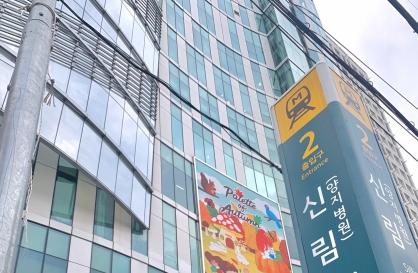
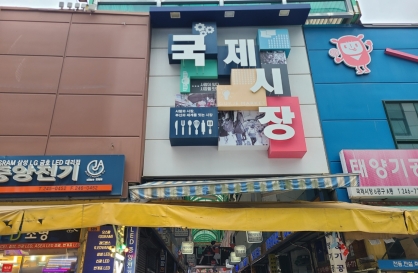
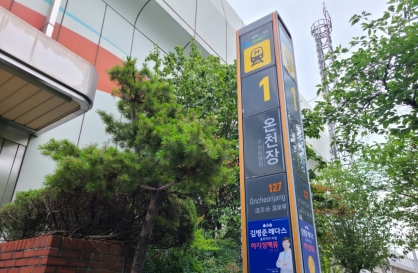
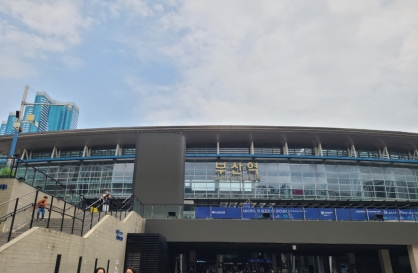






![[More than APT] Residents, architects together design homes](http://res.heraldm.com/phpwas/restmb_idxmake.php?idx=652&simg=/content/image/2024/11/24/20241124050036_0.jpg&u=)
